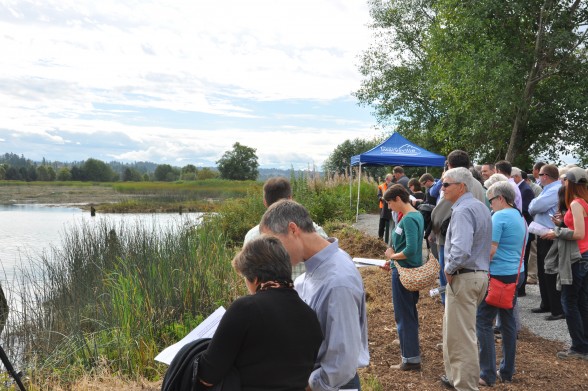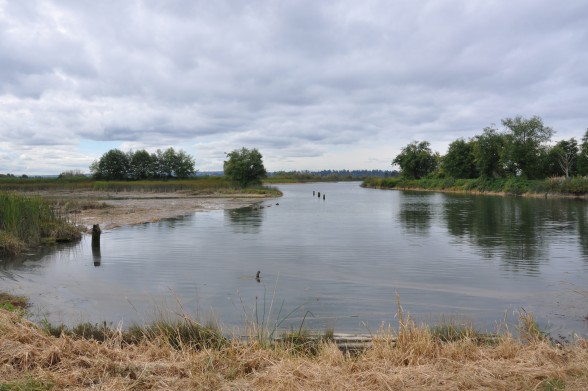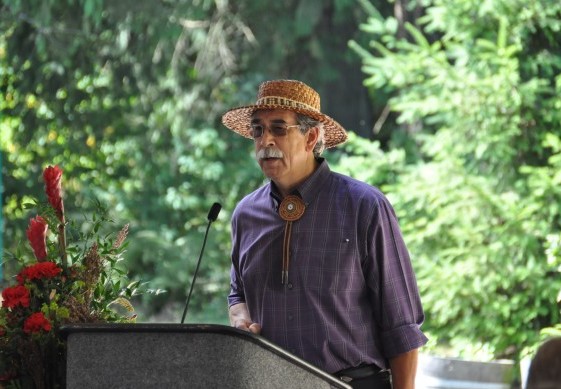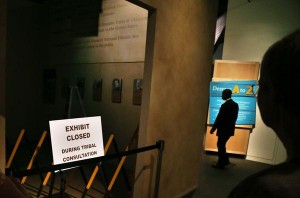
Despite taking up as much space as Australia, the blue-white puzzle of ice floating on the Arctic Ocean is an abstraction to the billions who have never seen it. But continued shrinkage of sea ice is changing life for many living things. A few Alaska scientists added their observations to a recent journal article on the subject.
By Ned Rozell | Geophysical Institute
08/26/2013
Since 1999, the loss of northern sea ice equal to the size of Greenland is a “stunning” loss of habitat for animals large (polar bears) and small (ice algae and phytoplankton that feed a chain of larger creatures leading up to bowhead whales). So write the 10 authors that teamed to write “Ecological Consequences of Sea-Ice Decline,” featured in the August 2, 2013 issue of Science.
Eric Post of Penn State University, a former graduate student who studied caribou at the University of Alaska Fairbanks, is the lead author on the paper. When sea ice hit its minimum extent in the satellite era about a year ago, it got him thinking about how the loss of ice affects living things. That’s when Post, now the director of the Polar Center, rallied other contributors, from polar bear biologists to atmospheric scientists, to bring their results together.
“I think all of us as authors learned quite a bit about the importance of sea ice loss,” he said by email. “Individually, we each had a pretty clear idea of the implications of sea ice loss for certain parts of the arctic system, but none of us really grasped the full scope of the problem.”
Starting at the smaller end of things, the scientists point out that freshening of the Arctic Ocean caused by melting of sea ice may cause smaller types of plankton to thrive.
Arctic foxes, great wanderers of sea ice, will be limited by less of it, which would decrease the spread of rabies they sometimes carry from Russia’s mainland to Svalbard.
Walrus, which suck clams out of their shells with piston-like tongues, use sea ice as a resting spot between dives to the ocean floor. In recent years, people have seen more walruses using shorelines as haul-out spots; U.S. Geological Survey scientists counted 131 carcasses at one of these sites in September 2009. They wrote that the deaths, perhaps because of exhaustion or trampling, “appear to be related to the loss of sea ice over the Chukchi Sea continental shelf.”
In Canada’s arctic, “later freeze-ups and increased shipping traffic should shift or prevent the annual migration of the Dolphin and Union caribou herd,” the Science authors wrote. Parasites that feed off the caribou might increase because of this, but diseases spread by wandering caribou might decrease.
Polar bears need sea ice to hunt their favorite food, seals. As the sea ice shrinks, polar bears may be driven to land, where brown bears might outcompete them or hybridize with them.
The two UAF scientists who added to the report are Uma Bhatt, who studies the atmosphere, and Skip Walker, an expert on tundra plants. They have both done work to prove that the loss of sea ice has made the Arctic a greener place.
How might that happen? With less ice acting as a mirror for sunlight, the darker ocean absorbs more heat, which in turn warms the coastlines touching the Arctic Ocean. That warm air encourages plants to convert sunlight into growth at a higher rate and lengthens the growing season. Woody shrubs are becoming more numerous and taller, shouldering out smaller tundra plants. And the most extreme region of far north plants — a swath of bryophytes, lichens, blue-green algae and a few other non-woody species that make up what Russians call “polar desert” — seems to be headed for extinction.
The study helped lead-author Post envision northern sea ice as he would a great boreal forest or caribou herd scattered across an arctic plain.
“Sea ice is a living system,” Post said. “And not only does it harbor and sustain life, which is obviously affected by its loss, its disappearance influences the climate systems that affect life on other parts of the planet. We’ve come a long way in understanding how the loss of vast areas of mature tropical rainforest affects everything from indigenous cultures to species to ecosystems; our views of sea ice loss need to catch up with that understanding.”
Since the late 1970s, the University of Alaska Fairbanks’ Geophysical Institute has provided this column free in cooperation with the UAF research community. Ned Rozell is a science writer for the Geophysical Institute.
– See more at: http://alaska-native-news.com/the-arctic/9157-a-continent-of-ice-on-the-wane.html#sthash.KOPiL9DH.dpuf











 Colville Tribal Police are offering a $500 reward for information leading to conviction of the poachers.
Colville Tribal Police are offering a $500 reward for information leading to conviction of the poachers.






